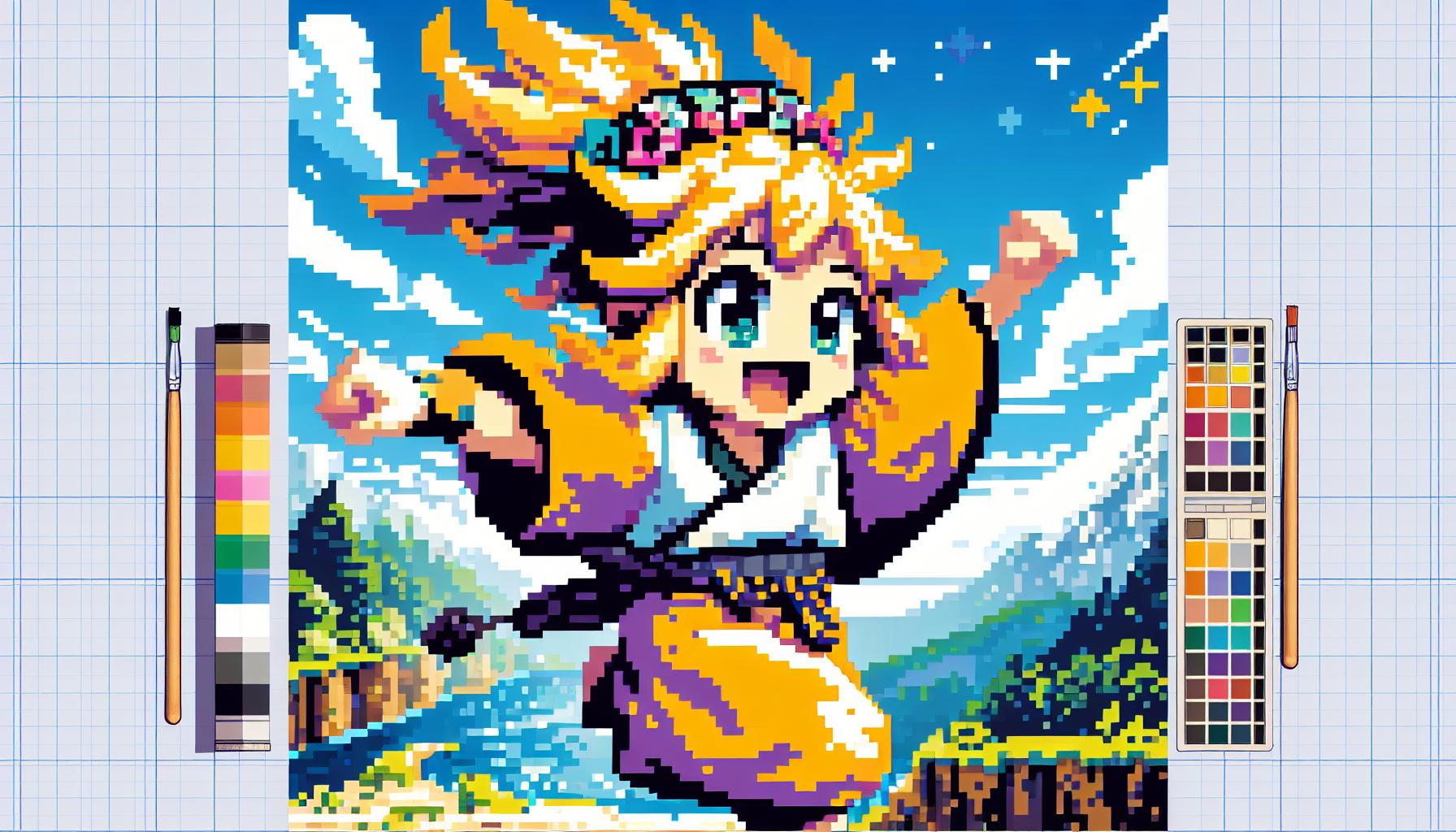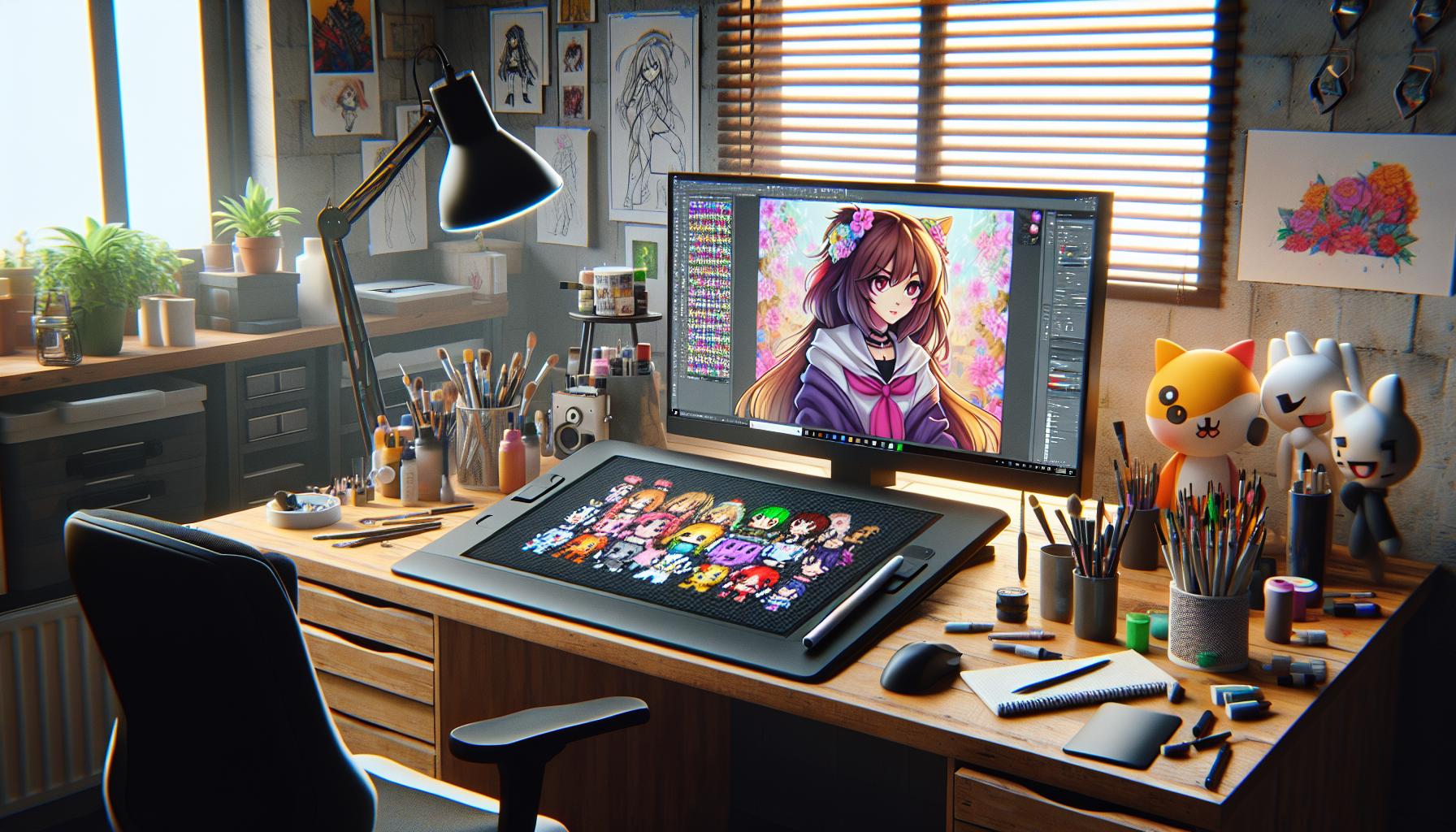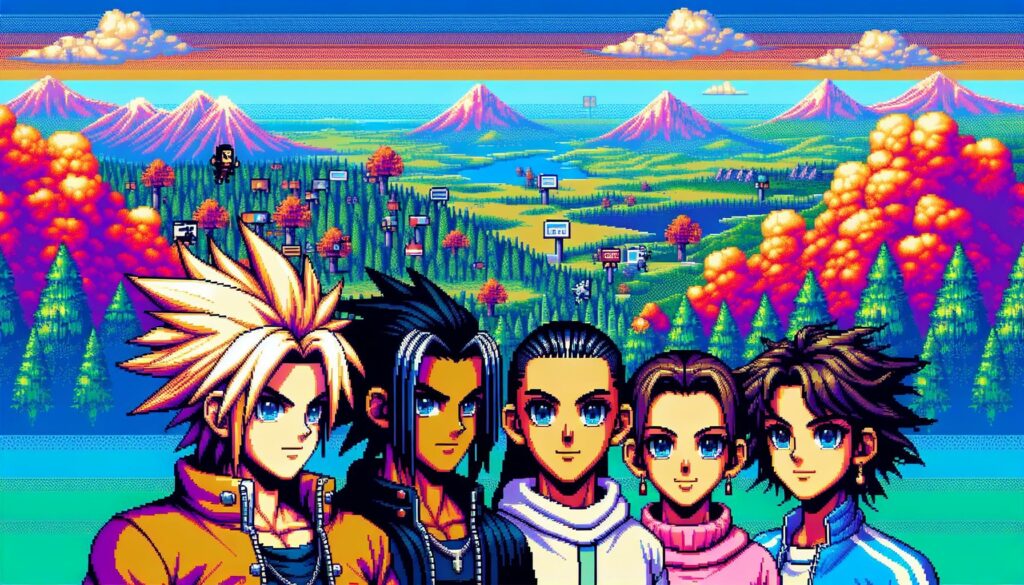Anime:-Cetsel3nxk= Pixel Art has become a beloved medium for anime enthusiasts looking to capture their favorite characters in a nostalgic 8-bit style. From Studio Ghibli classics to modern-day hits like Demon Slayer, artists are transforming these dynamic animations into charming blocky masterpieces that’ll make any retro gaming fan swoon.
The unique aesthetic of anime pixel art combines Japan’s distinctive character designs with the limitations and charm of pixel-based graphics. What started as a necessity in early video games has evolved into an art form that’s taking social media by storm. Artists worldwide are pushing creative boundaries by recreating iconic anime scenes one pixel at a time, proving that sometimes less resolution means more imagination.
Anime:-Cetsel3nxk= Pixel Art
Anime:-Cetsel3nxk= Pixel Art in anime combines traditional Japanese animation aesthetics with retro-style digital graphics created through individually placed pixels. Each pixel serves as a building block to form characters, backgrounds and animation frames in a distinctively nostalgic style.
The artistic technique follows specific principles:
- Limited color palettes create depth through carefully selected shades
- Square pixels form recognizable anime character features like large eyes, spiky hair and expressive faces
- Dithering patterns generate textures and smooth color transitions
- Anti-aliasing techniques soften harsh pixel edges for smoother character outlines
Key characteristics of anime pixel art include:
- Simplified yet recognizable anime character designs
- Bold outlines defining character silhouettes
- Exaggerated facial expressions captured in minimal pixels
- Dynamic poses conveyed through strategic pixel placement
Modern anime pixel artists employ specialized tools:
- Graphics software like Aseprite and GraphicsGale
- Custom pixel-perfect brushes
- Grid-based canvas systems
- Animation timeline features
| Resolution Types | Typical Canvas Size | Common Use Cases |
|---|---|---|
| Low-res | 32×32 to 64×64 | Icons, Avatars |
| Medium-res | 128×128 to 256×256 | Character Sprites |
| High-res | 320×320 to 640×640 | Scene Art |
This art style creates a unique intersection between classic gaming aesthetics and contemporary anime visual elements, preserving the essence of both mediums while establishing its own distinct identity within digital art communities.
Evolution of Anime-Style Pixel Art

Anime:-Cetsel3nxk= Pixel Art in anime evolved from basic 8-bit graphics to sophisticated digital artwork spanning three decades of technological advancement. This artistic journey transformed simple sprites into complex visual narratives that blend Japanese animation aesthetics with retro gaming charm.
Early Japanese Gaming Influences
Japanese gaming companies pioneered anime-style pixel art through iconic titles like Final Fantasy IV (1991) Chrono Trigger (1995). Nintendo’s Game Boy platform sparked creative solutions to hardware limitations, leading artists to develop distinctive techniques for character expression using minimal pixels. Square Enix revolutionized sprite-based storytelling by introducing detailed character portraits alongside basic battle sprites. The constraints of early gaming hardware resulted in innovative visual techniques:
- Limited color palettes (4-16 colors) forced artists to maximize contrast
- Simplified anime characteristics focused on eyes hair silhouettes
- Sprite animations emphasized key poses over fluid movement
- Character designs incorporated recognizable symbols patterns
Modern Pixel Art Aesthetics
Digital artists today create Anime:-Cetsel3nxk= Pixel Art with expanded creative possibilities through advanced tools software platforms. Contemporary pixel artists incorporate traditional anime elements while maintaining authentic retro aesthetics:
- High-resolution grids (128×128 up to 512×512 pixels)
- Enhanced color depth (32-bit color palettes)
- Detailed shading gradients for depth dimension
- Smooth animation cycles with multiple keyframes
| Platform | Active Artists | Monthly Posts |
|---|---|---|
| 50,000+ | 125,000 | |
| DeviantArt | 25,000+ | 75,000 |
| Pixiv | 35,000+ | 95,000 |
Creating Anime Characters in Pixel Form

Transforming anime characters into pixel art requires specific techniques and tools to capture distinctive features while maintaining the charm of both styles. The process combines traditional anime aesthetics with pixel-based limitations to create unique digital illustrations.
Essential Tools and Software
Digital artists create Anime:-Cetsel3nxk= Pixel Art using specialized software with pixel-perfect precision. Aseprite offers professional-grade pixel art tools with animation capabilities. GraphicsGale provides advanced color management features specifically designed for pixel artists. PyxelEdit excels at tileset creation with its intuitive interface for character sprites. Free alternatives include Piskel for browser-based creation and GIMP with pixel art plugins. Essential hardware includes drawing tablets with precise stylus control such as Wacom or XP-Pen devices.
Basic Pixel Art Techniques
Pixel artists start with basic shapes using a limited color palette of 16-32 colors. Creating smooth curves involves strategic pixel placement through techniques like anti-aliasing along edges. Character outlines use 1-2 pixel widths for clarity while maintaining recognizable anime features such as large eyes distinctive hairstyles. Dithering patterns add texture to clothing hair through alternating pixel colors. Shading employs clustering techniques with darker pixels concentrated in shadow areas. Artists implement jaggies control by placing pixels at 45-degree angles for cleaner diagonal lines.
Popular Anime Pixel Art Styles

Pixel artists have developed distinct approaches to recreating anime characters, each style capturing unique aspects of Japanese animation aesthetics. These styles range from ultra-simplified forms to intricate detailed compositions.
Chibi and Super-Deformed Designs
Chibi pixel art transforms anime characters into adorable miniature versions with exaggerated proportions. Artists create these designs using compact pixel grids, typically 32×32 or 64×64 resolution, emphasizing oversized heads, tiny bodies, and simplified facial features. Common characteristics include:
- Large round eyes taking up 40% of the head space
- Minimalist expressions using 2-3 pixels for each feature
- Stubby limbs measuring 1/3 of standard proportions
- Pastel color palettes with 12-16 colors maximum
- Simple shading patterns focused on basic forms
Realistic Anime Adaptations
Realistic Anime:-Cetsel3nxk= Pixel Art maintains proportionate character designs while incorporating detailed shading techniques. Artists utilize larger canvas sizes, typically 128×128 pixels or more, to capture intricate elements:
- Accurate body proportions matching original character designs
- Complex shading with 32-64 color gradients
- Detailed hair strands using careful pixel placement
- Fabric textures created through dithering patterns
- Environmental lighting effects with multiple color depths
- Facial features closely resembling traditional anime art
Notable examples include fan recreations of Studio Ghibli characters that preserve Miyazaki’s distinctive art style in pixel form.
Best Examples in Games and Media
Square Enix’s Final Fantasy VI showcases iconic anime-inspired pixel art through characters like Terra Branford with distinctive green hair rendered in 16-bit detail. Cave Story demonstrates masterful pixel animation through its protagonist Quote featuring smooth movement cycles combined with expressive anime-style facial features.
Notable examples from modern indie games include:
- VA-11 Hall-A features cyberpunk anime aesthetics with detailed character portraits in pixel art
- CrossCode blends action RPG elements with anime-influenced character designs
- Hyper Light Drifter incorporates anime combat sequences with neon pixel animations
- Stardew Valley adapts anime character proportions into charming farming simulation sprites
Popular media adaptations showcase pixel art interpretations:
- Studio Ghibli fan artists recreate scenes from Spirited Away in detailed 32-bit style
- Sailor Moon transformations reimagined as arcade-style animations
- Dragon Ball fight sequences converted to Street Fighter-inspired pixel sprites
- One Piece character roster adapted into RPG-style battle sprites
Modern pixel artists create dynamic anime content across platforms:
| Platform | Content Type | Average Views |
|---|---|---|
| Character sprites | 25,000+ | |
| Scene recreations | 15,000+ | |
| DeviantArt | Animation loops | 10,000+ |
| Pixiv | Wallpaper art | 20,000+ |
The intersection of anime aesthetics with pixel graphics continues expanding through games like Octopath Traveler which combines HD-2D visuals with traditional JRPG elements. Platforms such as itch.io host numerous indie projects featuring anime pixel art visual novels graphic adventures.
Tips for Aspiring Anime Pixel Artists
Mastering Anime:-Cetsel3nxk= Pixel Art begins with mastering fundamental pixel placement techniques:
- Start Small
- Create 16×16 or 32×32 character sprites
- Practice basic anime facial features
- Focus on readable silhouettes
- Color Management
- Limit palettes to 8-16 colors per character
- Create separate palettes for shadows light effects
- Use consistent hues for character themes
- Essential Techniques
- Apply anti-aliasing along curved edges
- Implement dithering for gradients
- Create clear outlines with contrast colors
- Character Design Elements
- Emphasize distinctive anime eyes shapes
- Maintain recognizable hairstyles
- Simplify clothing details while preserving style
- Animation Basics
- Build 3-4 frame walking cycles
- Create smooth transitions between poses
- Design clear keyframes for action sequences
- Software Setup
- Configure pixel-perfect canvas settings
- Enable grid overlays for precise placement
- Set up custom workspace shortcuts
- Reference Management
- Save character reference sheets
- Create style guides for consistency
- Document color codes hex values
- Workflow Optimization
- Build reusable asset libraries
- Create modular character parts
- Establish organized layer systems
Tools to accelerate learning:
| Software | Key Features | Best For |
|---|---|---|
| Aseprite | Animation tools timeline editing | Character sprites |
| GraphicsGale | Precise pixel control | Detailed illustrations |
| PyxelEdit | Tileset creation | Background elements |
Daily practice exercises improve pixel placement accuracy line quality color coordination. Join online communities to receive feedback share techniques explore new styles.
Anime pixel art stands as a testament to the enduring appeal of both retro gaming aesthetics and Japanese animation. This unique art form continues to evolve through dedicated artists who blend traditional anime elements with pixel-based creativity.
The growing community of pixel artists demonstrates that this medium isn’t just a nostalgic throwback but a vibrant contemporary art form. Whether through indie games software tools or social media platforms artists keep pushing the boundaries of what’s possible with pixel-by-pixel design.
The fusion of Anime:-Cetsel3nxk= Pixel Art has created an exciting space for artistic expression that resonates with both gaming enthusiasts and animation fans alike. As digital art tools advance this distinctive style will undoubtedly continue to captivate audiences and inspire new generations of creators.

